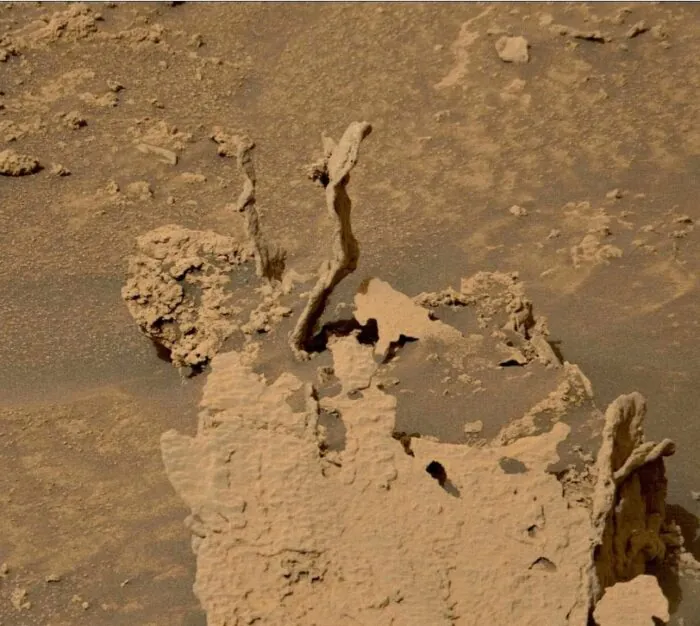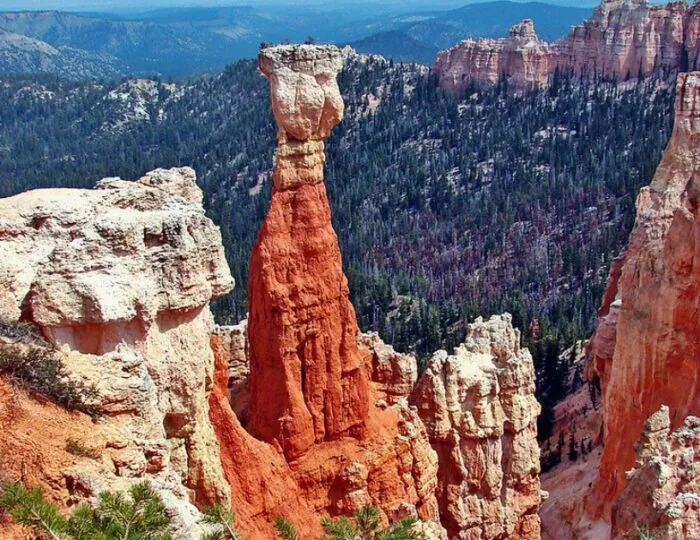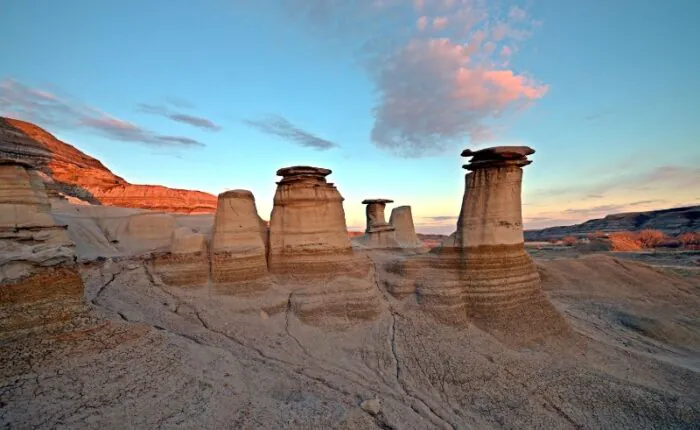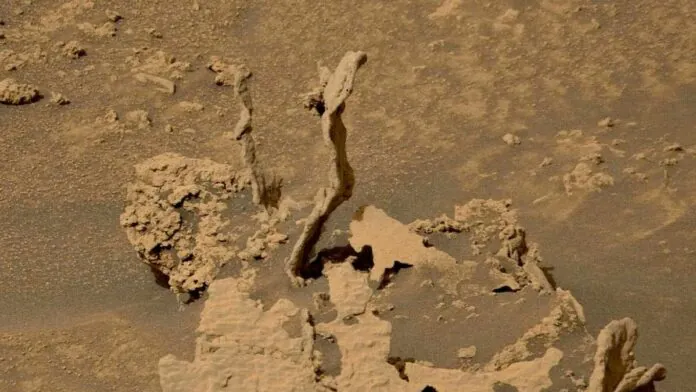© ROOT-NATION.com - Use of content is permitted with a backlink.
The Curiosity rover has discovered a strange rock formation on the alien landscape of Mars. Among the shallow sands and boulders of Gale Crater rise several winding stone towers – the protrusions of sedimentary rocks look almost like frozen streams of water pouring from a pitcher invisible in the sky.
Experts say that in fact the columns were probably made of cement-like substances that once filled ancient cracks in the rock. As the softer rock gradually collapsed, streams of dense material remained standing.

The rock formations were captured by a camera aboard the Curiosity rover on May 17, but NASA and SETI (Search for Extraterrestrial Intelligence) experts shared the images only last week as part of the SETI Planetary Picture of the Day initiative.
In terrestrial geology, ‘hoodoo’ is a high and thin spire of rock formed by erosion. It is also called a tent rock, fairy chimney, or earth pyramid. Hoodoos can usually be found in arid environments, such as the canyons of Utah or southern Serbia, and the columns can sometimes reach the height of a ten-story building.

Natural structures are formed by layers of hard rocks that accumulate in softer sedimentary rocks. As the rest of the rock collapses from rain, wind, or frost, a magnificent mould of an ancient fracture remains in the bedrock.

The two stone towers on Mars look as if they are about to collapse compared to what we see on Earth, but they are obviously strong enough to withstand the lighter gravity on the surface of the Red Planet. Another strange rock formation discovered by Curiosity earlier this year could have been created in a similar way, albeit with completely different results. This other, smaller stone looks like a piece of coral or a flower with numerous petals reaching out to the sun.
“One theory that has emerged is that the rock is a type of concretion created by minerals deposited by water in cracks or divisions in existing rock,” a press release from NASA explained at the time. “These concretions can be compacted together, can be harder and denser than surrounding rock, and can remain even after the surrounding rock erodes away.”

Gale Crater is not exactly flat, but the alien spiers detected by Curiosity stand out from the rest of the environment, although there are no height measurements in the image. High rock tombstones may now look lifeless, but their formation speaks volumes about the ancient conditions on Mars and whether life could once have thrived there billions of years ago. Gale Crater itself is considered to be the dried-up bottom of the lake, although it may be smaller and more volatile than experts once suggested. Rock formations in and around the ancient lake help to reveal the true history of the region.
You can also help Ukraine fight with Russian occupants via Savelife or via an official page of the National Bank of Ukraine.
Read also:
- Water on Mars existed much longer — evidence proves
- Curiosity photographed the «entrance» in the Martian rock


